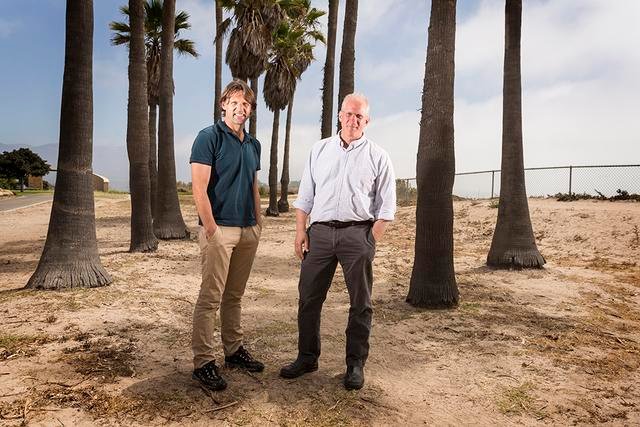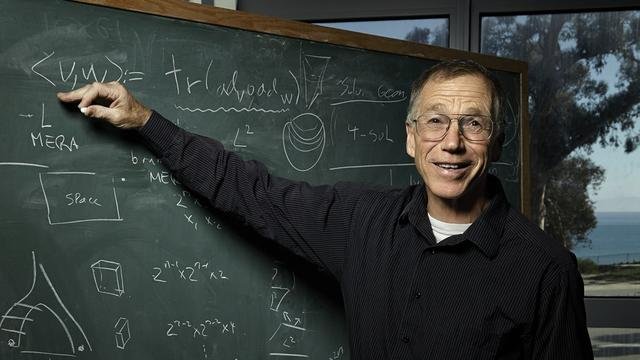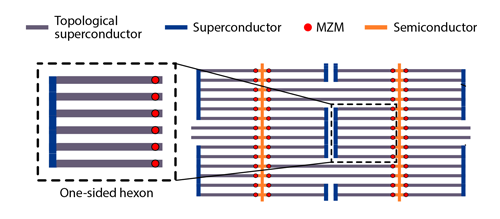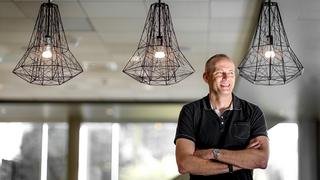The next stage in Quantum Computers: The Topological platform & Microsoft is hedging their brand to be a top in the industry...
The focus
The next steps in quantum computing is is being fore-fronted by Microsoft aiming to be a top contender in the field of topological computing. Microsoft believes this computing holds the key to creating a stable qubit. The goal is to encode qubits in a quasiparticle called 'non-abelian anyons' that emerge from interactions inside matter. It hopes to use their topological properties, which make qubits more stable, to create its general-purpose quantum computer.
The centerpiece of Microsoft’s ambitions is the topological qubit. The problem is that qubits are extremely finicky. If you disrupt them in even the smallest way, they “decohere,” which in layman’s terms basically means they stop being in a physical state where they can be used for computation.
The only way to protect it from outside interference that could cause it to decohere is to create and operate it in a really, a comprehensive cold place. The group created a system in which qubits operate at just a hair above absolute zero, or 30 millikelvin – the coldest place on earth, colder than deep space while still being able to communicate with people and other computers working at room temperature. This provides the opportune environment for calculations and computations.
The Team
Microsoft has hired top physicists to join Todd Holmdahl, the lead of the quantum-computing project :
Microsoft has also enlisted two leaders in the field of quantum computing :
Leo Kouwenhovenis a distinguished professor at Delft University of Technology in the Netherlands and was founding director of QuTech, the Advanced Research Center on Quantum Technologies.

Charles Marcus is the Villum Kann Rasmussen Professor at the Niels Bohr Institute at the University of Copenhagen and director of the Danish National Research Foundation-sponsored Center for Quantum Devices. Krysta Svore has stated “A quantum computer is able to model nature,” she also has led development of Microsoft software designed to work on quantum computers, as well as the quantum simulators that allow development to proceed even while the first machines are being built. “With classical computers we’re not able to really understand those processes.” Svore said one key advantage to having a programming language that works in a simulation environment is that it will help people interested in using quantum computers to solve problems get a better sense of how to harness quantum power for different types of problems. That will accelerate their ability to take advantage of quantum computing when it’s available.
The Benifits
Researchers have stated quantum computing could eventually be used to solve some of the world’s toughest issues and problems, from world hunger to the time effects of climate change. These experts use terms like “magic state” to describe some elements of quantum computing theory and practice. That’s because it would allow scientists to do computations in minutes or hours that would take the lifetime of the universe on even the most advanced classical computers we use today. This would mean that people could find answers to scientific questions previously thought unanswerable. The possibilities for this type of technology that can help foward humanity are endless.
Microsoft's qubit efforts are notable in two ways as said by Charles King a principal analyst at Pund-IT. First, the company's topological quantum computing project is different than other publicly available quantum solutions, and could theoretically be applied to different areas of problem solving," he told TechNewsWorld.
"In addition, the company's plan to leverage its Visual Studio and other programming technologies in its efforts should open its quantum solution to a wider audience of individuals and organizations,"
A new language
Microsoft has set up a lab in Santa Barbara California, and began recruiting some of the world’s leading theoretical physicists, materials scientists, mathematicians and computer scientists to work on building the topological qubit. Joining Leo Kouwenhoven are Charles Marcus, David Reilly and Matthias Troyer who are all leaders in the field.
Their are creating the infrastructure for a full computing platform while simultaneously working on building hardware, software and programming languages for topological quantum computing.
At the Microsoft Ignite conference CEO Satya Nadella announced they have developed a new programming language the name of which was not revealed. This will provide developers the tools to start playing with quantum code at some point in the not too distant future. He made the announcement during his keynote and said their release of this new programming language and computing simulator is designed specifically for quantum computing. The announcement shows just how serious Microsoft is becoming a top force in the field.
Roadmap for a Scalable Topological Quantum Computer

Michael Freedman is head Microsoft’s theoretical research group, he was a renowned math genius known for his fundamental research into an obscure field of math called topology. He has said that he is pleased to see a lifetime of his work in theoretical mathematics transform into an actual computing platform that could take on previously unsolvable problems is “very intense.”
Freedman says he spends little time thinking about the potentially life-altering effects of his work, “I’ve been asked about the applications of quantum computing and what motivates me? Do I want to cure disease, design new materials, protect the environment?” he said. “The truth is, it’s none of that. At this point in the project, the only thing I care about is making the quantum computer work.” Freedman is very passionate about topology knot theory . He has stated it is in part of what led him to what he affectionately calls the first real job of his life, building a topological qubit.
A new study by Torsten Karzig from Microsoft Station Q California, and colleagues that will help further the innovations in the quantum field. This study brings together the expertise of a large and diverse group of physicists ranging from experimentalists to topologists, to lay out a roadmap for a scalable architecture based on one of the most popular approaches.

Schematic of one of the scalable architectures for topological quantum computation proposed by Karzig and colleagues. Sets of topological superconductors containing six elements (hexons), all hosting Majorana zero modes (MZMs) on the same side of the set, are interfaced with conventional superconductors and semiconductors to perform quantum computation.
Karzig and colleagues’ study comes at a point in time where there is optimism for the realization of TQC using Majorana nanowires but possibly along a path with several constraints. For example, branched structures of a nanowire could be used to generate a network of wires for TQC, but superconducting contacts are only easy to make at the ends of the wire. This would mean that superconducting contacts must be avoided in making a large network of wires.
Also, the qubit lifetime will ultimately likely be limited by quasiparticle poisoning, a phenomenon in which an anomalously large number of unwanted quasiparticles, arising from Cooper electron pairs broken by stray microwaves, exists in the devices. The Karzig study brings together a large number of authors with expertise in device fabrication, in strategies for TQC, and in the solid-state-physics issues involving Majorana nanowires. The researchers propose a protocol for scalable TQC based on the existing Majorana nanowires, assuming that they can be brought into the topological phase.
The protocol involves designing a network from small sets of Majorana wires and performing a sequence of measurements on the sets illustration. The central idea is to use physical constraints on the network, such as aligning all wires with a global magnetic field, to predict which sets may be measured easily to perform TQC. For example, the researchers considered networks made from sets of four and six wires (“tetron” and “hexon” designs) together with the rule that only nearby Majorana zero modes could be measured in each configuration.
They then devised a strategy for TQC that optimizes robustness to quantities such as environmental temperature and noise as well the size of the network. The result of the analysis is a few scalable architectures that future experimental groups could pick between, depending on their device-construction capabilities and computational goals. The hexon architectures are likely to be computationally more efficient than the tetron architectures but will probably be more difficult to construct.
Here is the link to the entire article. I wanted to share a brief description though did not want to damage the explanation with my own words and maybe confuse some points.

Conclusion There is no question that we are in very exciting times with more of this technology coming to the forefront everyday. Their may be a question however on how long these technological applications will be used on commercial scales. Charles King again shared, "Right now quantum computing is in an early experimentation phase with systems that are relatively small, like Microsoft's, mainly useful for simulation experiments. "I expect more practicable, useful systems to be available in two to three years." Either way its obvious Microsoft has recruited the personal and tools excel in this industry and only time will show us on how this will intertwine into the fabric of our lives...
2-New Microsoft breakthroughs, general purpose quantum computing moves closer to reality
3-We've made a coding language for a quantum computer that may or may not exist
4-Inside Microsoft’s quest for a topological quantum computer
Interesting article: New Quantum Liquid Crystals May Play Role in Future of Computers
2-The human mind views 11 dimensions
3-The discussion/poetry
 FOLLOW/
FOLLOW/Buy Bitcoin@Coinbase
https://www.coinbase.com/join/590a798921e5d40a14fe17b1
Bitcoin-Litecoin-Ethereum
Join my team@Bitconnect
https://bitconnect.co/?ref=Ghostt
Email me with any questions [email protected]



Intersting article. Well done!
I also write articles about technology, economy and also reviews, maybe you can check out my account as well?
Keep going on with your great work!
Really appreciate it. I take a look and thanks for stopping by.
I wanted to know that I had read the news thoroughly. I would like to know more about what to do if I need help.
Ok, on what matter?
Thank you for giving me some time in your precious time. You are actually a real man real hero and smart
No, your the smart one obviously!! let me know if I should put my cape on baby!!
I'm very happy to get your opinion
I very happy to provide it if I knew what we were speaking about??
Ok boss I'm waiting for your next post to get your post very soon